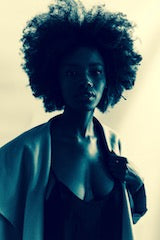
Have you ever been in a relationship and knew it was time to sever your ties? All the signs were on the wall, but you kept telling yourself, “I’ll give it one more try.” Knowing all along you should’ve cut your losses and walked away.
Well … that’s the inevitable truth with my relationship with Sundial Brands’ Shea Moisture.
I’ve been irked since I read the news that Unilever acquired Sundial Brands, one of the largest producers of hair and skincare products for African American women, in November 2017.
Darn it! Yet another company specializing in products for African Americans has delivered its loyal supporters into the hands of a beauty brand that not too long ago felt wasn’t worthy enough for their business.
This is not based on emotions, maybe a little bit, but on facts. According to a WWD report, African American women spent $7.5 billion per year on beauty products. To top it off, we spent 80 percent more money on cosmetics and twice as much on skincare than the mainstream female market.
Something is terribly wrong if we spent that much money, but are grossly ignored by mainstream brands.
Tiffany Gill, Associate Professor of History and Black American Studies at the University of Delaware, stated that many mainstream brands are reluctant to add shades for women of color. Their rationale? It’ll damage their brand making it less glamorous, less beautiful. (source)
This is why I’m having a problem with my loyalty to Shea Moisture since being sold to Unilever. Mainstream beauty brands only want my business now because they see me as a dollar sign and not as a deserving customer.
On L’Oréal’s African Beauty Brands page, it states:
“Our consumers are the source of our inspiration as it is almost impossible to find a wider scope of beauty rituals amongst any other consumer group: from braiding to weaving from relaxing to treating from coloring to styling.”
(By the way, L’Oréal bought Carol’s Daughter in 2014.)
Enter my ire with Sundial Brands. What was the upside for them? Sundial Brands already have a huge following of women of color who spend more money on beauty rituals than the general market.
I’m not buying their explanation that it’ll widen their audience reach (not that they owe me or anyone an explanation) or that they’ve set aside money to help women of color start new business.
First, the beauty industry has cornered the mainstream market, so they’re properly represented. Secondly, I think they set aside the money for black female entrepreneurship because they knew they’d get some blowback from their loyal supporters.
In addition to African American women having less beauty options, we also have more hazardous product ingredients. Environmental Working Group found that less than 25 percent of products marketed to black women have little to no potential for hazardous ingredients. Skincare products scored well. Hair care products scored abysmally.
Meanwhile, 40 percent of products marketed to the general market are less hazardous.
Therefore, I’m going to listen to my gut and walk away from Shea Moisture. I’ve decided to harness my portion of the $1.2 trillion African American spending power, 22 percent of which is spent in the $42 billion personal care product market, and support an indie hair care brand.
Indie brands have led the way in filling the gap mainstream brands left. While mainstream brands heavily advertise on television and in magazines, where the general market view their information, indie brands target African American women on social media, where they spend their time searching for product reviews, how-tos, and recommendations.
My fellow woman of color, the choice is yours. Just ask yourself, “How much is the cost of beauty worth?” the next time you purchase from a mainstream beauty brand.

